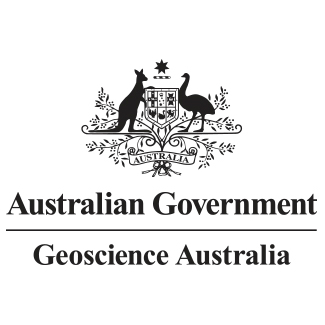Brief description
Tracking changes in the canopy density of mangroves, Digital Earth Australia (DEA) Mangrove Canopy Cover reveals how these extraordinary trees may be responding to sea level rise, severe tropical cyclones, drought, climatic cycles, changing temperatures and large storm events. Mangroves provide a diverse array of ecosystem services but these are impacted upon by both natural and anthropogenic drivers of change. In Australia, mangroves are protected by law and hence the natural drivers predominate. It is important to know the extent and canopy density of mangroves in Australia so that we can measure how mangroves are responding to sea level rise, severe tropical cyclones and climatic cycles. This product provides valuable information about the extent and canopy density of mangroves for each year from 1987 for the entire Australian coastline. The canopy cover classes are: - 20-50% (pale green) - 50-80% (mid green) - 80-100% (dark green) The product consists of a sequence (one per year) of 30 m resolution maps that are generated by analysing the Landsat fractional cover developed by the Joint Remote Sensing Research Program and the Global Mangrove Watch layers developed by the Japanese Aerospace Exploration Agency. This product is the result of a collaboration between Geoscience Australia, the University of Aberyswyth, CSIRO, the Joint Remote Sensing Research Program and the Terrestrial Ecosystem Research Network.Lineage
Maintenance and Update Frequency: asNeeded
Statement: The product development methodology is outlined in the following steps:
1) Calculate the green fractional cover (pv_pc) from all available cloud-free Landsat pixels for each year of observation and compare these over an annual time series to identify areas where green cover persists throughout the year.
2) Establish a relationship between the 10th percentile of green fraction (pv_pc_10) observed within a year and Planimetric Canopy Cover percentage (PCC%) derived from < 1 m spatial resolution canopy masks derived from Light Detection And Ranging (LiDAR) with this representing a unit that relates directly to forest cover.
3) Constrain the PCC% estimates to areas known to contain mangroves, with reference to the Japanese Aerospace Exploration Agency’s (JAXA) Kyoto and Carbon (K&C) Initiative Global Mangrove Watch (GMW) thematic layers for 1996, 2007-10 and 2015/16 with additional areas identified using tasseled cap wetness and State and Territory mangrove mapping products.
4) Apply PCC% thresholds to map mangrove forest extent (based on a pre-determined 20 PCC% threshold) and differentiate structural categories, namely, woodland (20-50 %), open forest (50-80 %), and closed forest (> 80 %).
5) Quantify the change in the relative extent of mangrove forest and canopy cover types over the period from 1987 at a national scale and establish relevance at regional (e.g., State/Territory) and local levels.
This product is the result of a collaboration between Geoscience Australia, the University of Aberyswyth, CSIRO, the Joint Remote Sensing Research Program and the Terrestrial Ecosystem Research Network
Notes
PurposeThe sequence of mangrove maps makes it possible to see how the extent of mangroves is changing over time. The maps can be used to understand how mangroves respond to disturbance events such as severe tropical cyclones. The maps can also be used to improve our representation of the ecosystem services provided by mangroves, which include: - coastal protection - carbon storage - providing nursery grounds for commercially important fish and prawn species - providing habitat for migratory and endemic bird species
Issued: 06 07 2021
Data time period: 1987-03-04
text: westlimit=112.92; southlimit=-45.00; eastlimit=159.11; northlimit=-10.00
Subjects
EARTH SCIENCES |
Published_External |
coast |
coastal ecosystem |
forest |
geoscientificInformation |
green |
woodland |
User Contributed Tags
Login to tag this record with meaningful keywords to make it easier to discover
Identifiers
- URI : pid.geoscience.gov.au/dataset/ga/145497

- global : 153fad23-dc0a-4b71-85e2-65104311d8cf


